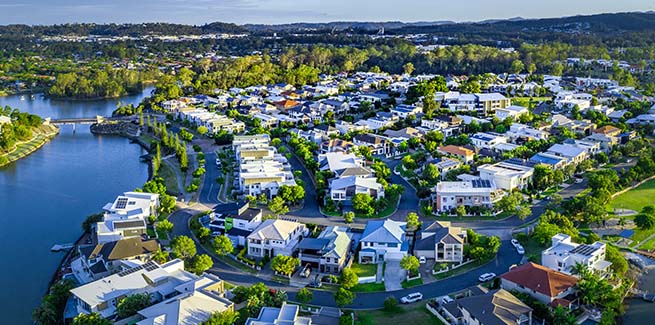Property research firm CoreLogic’s new Mapping the Market report, which involves an analysis of price trends across the country’s capital cities by research analyst Cameron Kusher, has identified significant reductions in the affordability of housing across six of Australia’s capital cities, particularly in Sydney and Melbourne.
Sydney
According to the research, 10.6 per cent of Sydney suburbs have median house prices that exceed $2 million, up 7.4 percentage points in the five years to June 2019, from 3.2 per cent.
Additionally, 31.4 per cent of Sydney suburbs currently have a median unit value below $500,000, down 21.7 percentage points from 53.1 per cent of suburbs five years earlier.
Melbourne
The research found that in Melbourne, 41.7 per cent of suburbs had a median house value of less than $500,000 compared to 6.9 per cent as at 30 June 2019, declining 34.8 percentage points.
This coincided with an increase in the share of Melbourne suburbs with a median unit value of more than $500,000, which jumped from 25.3 per cent to 57.2 per cent, over the same period.
Brisbane
In Queensland’s capital, the share of Brisbane suburbs with a median house value under $500,000 declined by 12.1 percentage points, from 52.4 per cent in June 2014 to 40.3 per cent in June 2019.
Additionally, CoreLogic reported that 12.5 per cent of Brisbane suburbs have a current median unit value in excess of $500,000, up from 8 per cent of suburbs five years prior.
Adelaide
As at the end of June 2019, 93.7 per cent of Adelaide suburbs had a median house value of less than $1 million compared to 97.7 per cent of suburbs five years earlier.
Moreover, 26 per cent of Adelaide suburbs had a median unit value of less than $250,000 compared to 21.5 per cent as at 30 June 2019.
Hobart
The share of suburbs in Hobart with a median house value of more than $500,000 has increased from 8.8 per cent in June 2014 to 50.4 per cent in June 2019.
In June 2014, 46.2 per cent of Hobart suburbs had a median unit value of less than $250,000, with the share falling to 9.7 per cent as at 30 June 2019.
Canberra
In Australia’s capital, the share of suburbs with a median house value of more than $1 million increased from 6.7 per cent in June 2014 to 11.4 per cent in June 2019.
As at June 2019, 70.5 per cent of Canberra suburbs had a median unit value under $500,000 compared to 87.6 per cent five years earlier
Perth
In contrast to the aforementioned capitals, 15 per cent of Perth suburbs had a median house value of more than $1 million, with the share dropping to 10.3 per cent by June 2019.
The share of Perth suburbs with a median unit value of less than $250,000 also increased, rising from 15.8 per cent in June 2014 to 25.9 per cent in June 2019.
Darwin
Prices also moderated in Darwin, with 30.5 per cent of suburbs having a median house value of less than $500,000 in June 2014 compared to 65.9 per cent as at June 2019.
Further, 6.6 per cent of Darwin suburbs had a median value of more than $500,000 compared to 14.8 per cent five years earlier.
Despite the reported decline in housing affordability across six of Australia’s capitals, combined capital city dwelling values have fallen by 10.2 per cent over the past few years, driven by peak-to-trough declines of 13.9 per cent in Sydney and 10.9 per cent in Melbourne.
However, CoreLogic’s latest Hedonic Home Value Index reported that values increased for the first time since July 2017 in Sydney and November 2017 in Melbourne, rising by 0.1 per cent and 0.2 per cent, respectively.
[Related: Housing downturn leaves state budgets $5.5bn short]
 ;
;